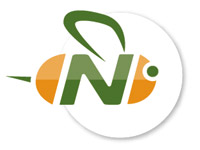
Which comes first — a sector in which consumers have a lot of choices and can easily switch providers, or companies that are rigorous in their customer service policies and attitudes?
A recent survey on customer service attitudes raises that question but doesn’t exactly answer it. Rather, it shows there is indeed a strong link between sectors in which consumers have a lot of choices and companies’ customer service policies. Kana conducted the poll online from Feb. 7-11.
For instance, the utilities sector was the least likely to experience customer defection, the survey found, perhaps for obvious reasons. Rarely do consumers have an option to switch to another, say, electricity or natural gas provider. This lack of choice came through in consumers’ perceptions about their utility providers — resulting in a sector ranking of third-least customer-centric.
However, the findings aren’t completely black and white. Consider what the survey unearthed about banking — an industry that offers more choices to consumers than the utility industry does. As a practical matter, many banking customers feel they’re held hostage because switching would be so inconvenient. The banking industry scored high on the list of those least likely to experience customer defection — but it also scored high on the list of customer-centric industries.
Fast and Friendly
There is a dominant theme running through responses to the survey, noted Scott Hays, senior director of product marketing for Kana.
“The top attributes customers are looking for in customer service are fast and friendly,” he told CRM Buyer, “and they are expecting those attributes to come across in all sectors, from all their service providers.”
The rub is, while companies all recognize this — and even the service providers with high barriers to defection presumably want happy customers — fast and friendly are becoming increasingly harder to deliver.
That is because customers are flooding alternative channels with their service requests, Hays said, and only advanced and forward-looking companies and business sectors have been keeping up.
That in part explains the banking sector’s relatively high customer service satisfaction score even though many of its policies and practices — such as high fees — tend to generate disgust.
Customer service in the financial services industry is particularly complicated, Strategic Vision CEO David Johnson pointed out.
“The industry knows it hasn’t fully recovered from the fallout of the financial crash and the bailouts. People still do have a very negative impression of the sector,” he told CRM Buyer.
“Banks and financial institutions are aware that as the economy picks up steam, consumers will be more inclined to make different choices — and they will remember which banks offer good service,” Johnson said.
Inconvenience vs. Loyalty
The airline industry’s customer service is also complicated.
It landed on the list of sectors with the highest likelihood of customer defection, perhaps for obvious reasons. Consumers typically do have choices about which airlines to fly, or they might opt for a different mode of transportation.
The airlines have tried to retain customers through extensive loyalty programs, a move that appears to be working only at the margins, the Kana survey suggests.
“What we found is that fewer consumers will make choices about a flight based on their membership in a loyalty program and instead consider their most recent experience on that airline,” Hays said.
Only 12 percent of airline customers could be labeled “stalwarts” — that is, consumers who said they were least likely to switch following a poor customer experience — the survey found.
The Friendly Neighborhood Pharmacy
There is rarely a straight line between many competitive options and good customer service, although certainly such textbook scenarios exist — such as in the pharmaceutical industry.
Pharmaceuticals is one of the industries with the highest likelihood of customers defecting — despite being one of the top three most customer-centric. (The other two are banking and hotels.)
Coincidentally, it is also an industry model that adapts very well to fast and friendly.

























































Really insightful post Erika. I think this is why customer service must align themselves closer to other customer facing functions, like sales and marketing. In doing so they are able to be proactive about service and create meaningful data which marketing and sales can use to enhance retention.